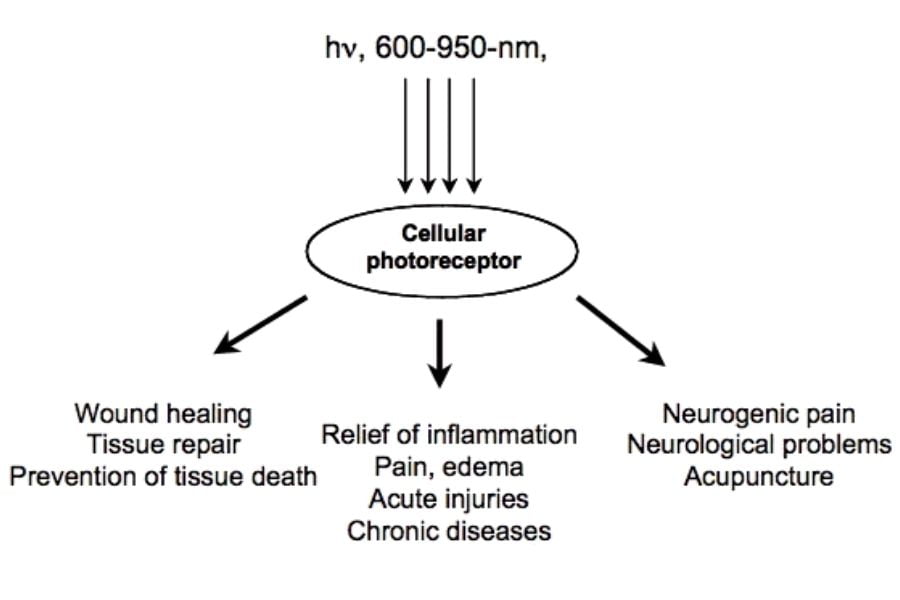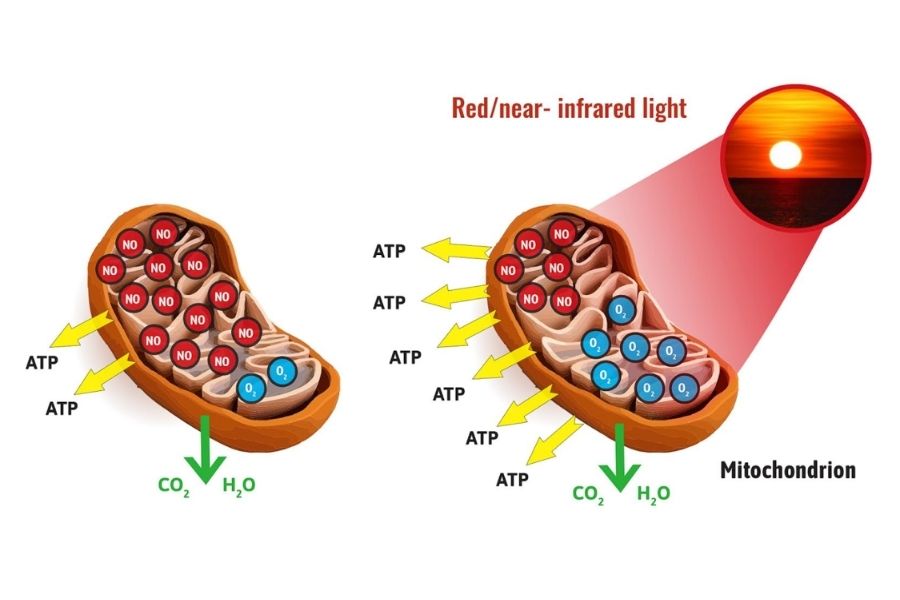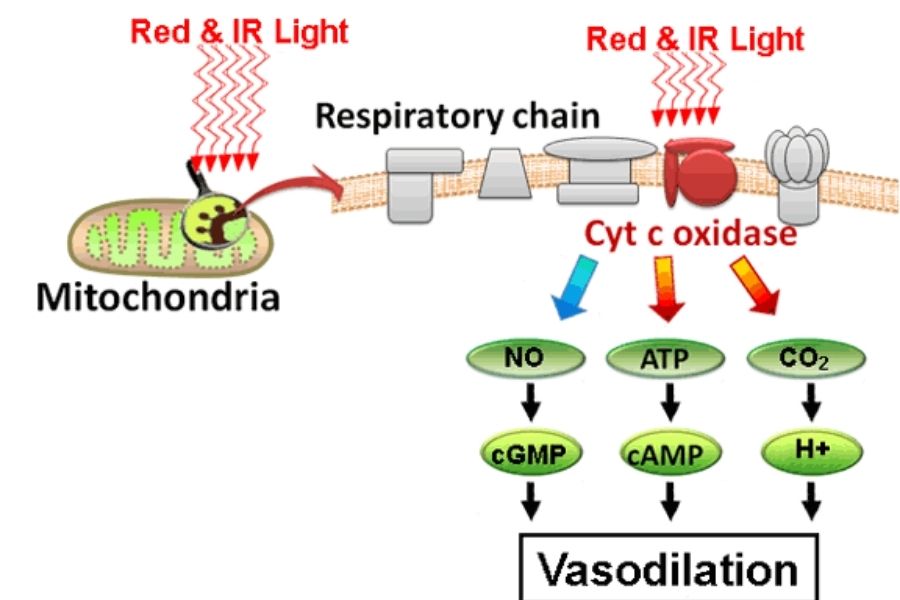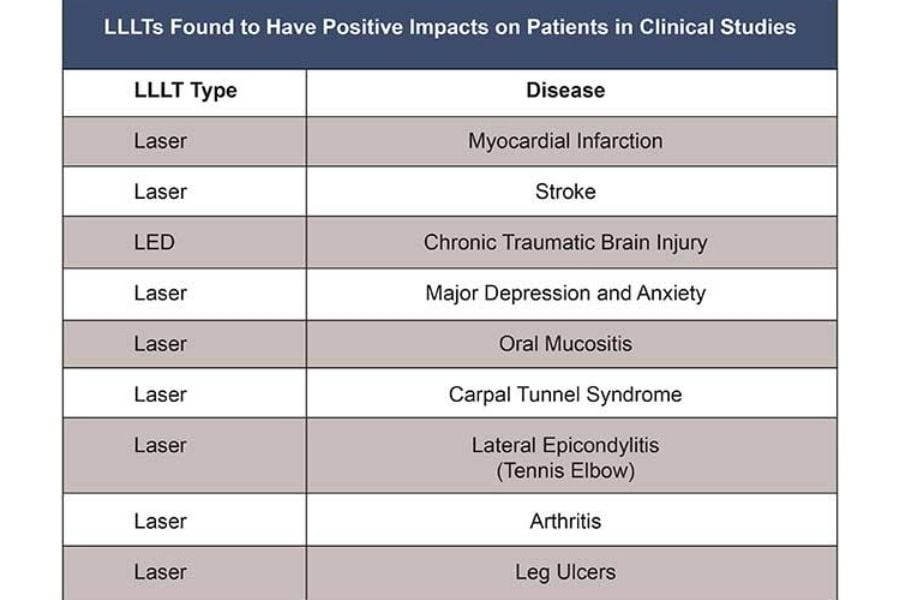“The more light you allow within you, brighter the world you live in will be.”
Shakti Gawain
Holy Hindu “Granthas” mentioned the use of sunlight for treating disease. In this article, we will focus on the use of light therapy in wound healing.
Light therapy (also called “phototherapy or heliotherapy”) involves the exposure to daylight (sunlight) or wavelength equivalent to the curative treatment for ‘seasonal affective disorder’ (SAD). It is used to treat skin-related problems for psoriasis, acne, eczema to specific wavelength using ‘polychromatic polarized light.’ It is also used to treat circadian rhythms related disorders, psychiatric diseases, depression, bipolar disorder.
Where Can We Use Light Therapy?

Light therapy is mostly used to treat skin-related diseases. Collagen, a skin protein made up of fibroblast cells in the dermis layer, is responsible for the tightness, elasticity, and brightening of the skin. In aging, skin loses its ability to produce collagen, resulting in skin and wrinkles aging. Collagenic light lamps developed by Dr. Muller emits red light at 633 nm wavelength called ‘photobiomodulation’ (PBM). Light therapy in wound healing is helpful; it relieves pain and rebuilds skin cells. 633 nm increases energy transfer between skin light-absorbing cells, leading to increased oxygenation and detoxification of skin by increasing blood circulation.
1. Psoriasis
It is inflammation by the immune system. UV rays suppress the immune system and reduce inflammatory responses (light rays wavelength 313 – 400 nm). It is often combined with a specific drug called ‘psoralen’. Low-level laser (light) therapy (LLLT) helps stimulate, heal, and restoring skin.
2. Neonatal Jaundice
As we know, light is used to treat neonatal jaundice. A yellowish pigment called bilirubin formed due to the breakdown of red blood cells cannot get cured, leading to neonatal jaundice. Phototherapy uses energy from light that breakdown bilirubin into compounds that gets excrete via urine or stool. Light rays are successful for bilirubin to get treated in the blue region of the visible light spectrum 460-490 nm. So, blue light therapy uses to isomerize bilirubin.
3. Feel Good Factor – Serotonin Release
Serotonin is called “happy hormone.” It is responsible for boosting mood, making the person feel calm. Exposure to the bright light produces serotonin that makes us feel happier and energetic. It also promotes relaxing sleep.
4. Pre And Post Surgery – Light Therapy
Light therapy can also be used before the surgery to strengthen muscle tissues, mitochondria, and inflammation caused by oxidative stress. Similarly, it is useful after the surgery to promote wound healing in lesser time by reducing oxidative stress.
5. Useful In Diabetic Foot

Light therapy can promote rapid tissue regeneration and healing of diabetic ulcers that failed to respond to standard treatment forms.
Catherine N Tchanque-Fossuo et al. mentioned in their article “Low-level Light Therapy for Treatment of Diabetic Foot Ulcer: A Review of Clinical Experiences” showed the use of low-level light therapy (LLLT) in the form of low-level or low-power laser or light-emitting diodes to alter biochemical pathways, may result in changes to cell shape, cell migration, and cell signaling.
Light therapy is also found to accelerate wound healing and recovery among older adults and in diabetic patients with non-healing skin ulcers and also in ulcers, stage 2 & 3. Prolonged wound healing in diabetes is due to inadequate angiogenesis, neuropathy and sensory loss, advanced glycation end products, and hyperglycemia. All these factors add to oxidative stress forming more free radicals.
Molecular Mechanism
The nitric oxide made available by UVA light treatment stimulates keratinocyte growth and differentiation and may play a key role in the healing of skin abrasions.
A major factor in healing is nitric oxide (NO), which inhibits inflammation and protects cells from lysis. It has an important role in muscle injury and repair, especially more helpful in sports. Sports injuries are trauma to muscles, joint ligaments, tendons, or bones. Improved arterial circulation delivers more nutrients to the site of injury, increased venous circulation, and lymphatic drainage reduces swelling and increases the debridement of damaged tissue.


Mitochondria are called the energy production house of cells as it produces ATP. It is a major site for the ‘electron transport chain’. It contains ‘Cytochrome C oxidase’ (Cox) who transfers an electron from cytochrome C to molecular oxygen. Cox is the main photo acceptor and transducer of photo signals in red and near-infrared regions (650-725 nm) of the light spectrum. In the catalytic center of Cox, these light rays increase the availability of electrons for the reduction of molecular oxygen by increasing mitochondrial membrane potential (MMP) and levels of ATP, cAMP, and ROS.

Nitric oxide (NO) powerful regulator in circulation (venous, arterial, and lymph) leads vasodilation by an increase in blood flow, oxygen & glucose with some growth factors towards damaged tissue thus reduces pain sensation. It is also a neurotransmitter made up of L-arginine senses pain, temperature, and pressure.

L-arginine is released from proteins. Some polypeptides in the small intestine are absorbed into the circulation and other amino acids and deliver it in every cell of the body. Some L-arginine is used for protein synthesis, and some are for the synthesis of NO. L-arginine converted to NO in endothelial cells if adequate enzyme (Nitric Oxide synthase – NOS) and cofactor are present. In diabetic patients and atherosclerosis, plaques occupied a major portion of vessels, so endothelial cells are not able to absorb NO properly. If endothelial cells cannot take L-arginine, NO will get formed; thus, in atherosclerosis, oxygen delivery to cells impaired. Molecular oxygen is one of the significant cofactors for the enzyme to form NO from arginine.
NO diffuses into smooth muscle cells and helps in the relaxation of these cells leading to more blood flow towards tissues. Nitric oxide released by nerve endings and can act on an enzyme called guanylate cyclase to relax blood vessels. Infrared light can increase tensile strength of healed tissue by increasing collagen synthesis.
6. Local Circulatory Systems
There is evidence that the IR causes the release of NO, increases lymphatic circulation by increasing the diameter of the lymphatic vessels.
7. IR And Pain Reduction
IR increases the ATP level in the brain, which acts as a neurotransmitter. Another neurotransmitter, acetylcholine released and metabolized, is controlled by LLL treatment. Light rays also lead to suppression of bradykinin signaling in dorsal root ganglion and inhibit pain transmission.
So, LLLT is an upcoming or alternative tool in treating pain, delayed wound healing, and skin-related problems. It is because of an increase in ATP production, increased angiogenesis, and anti-apoptotic activity.

Check whether your skin or eyes are sensitive or not to light therapy. Always consult your doctor before starting light therapy in wound healing and combining it with your original medication.
Finally,
“When you possess light within, you see it externally.”
Anaïs Nin
Read Also: Using Sound For Body Healing: Understand How It Works







